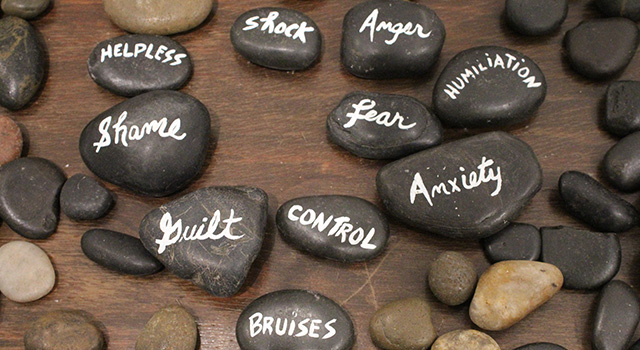By Cristina Cabrera Jarro -
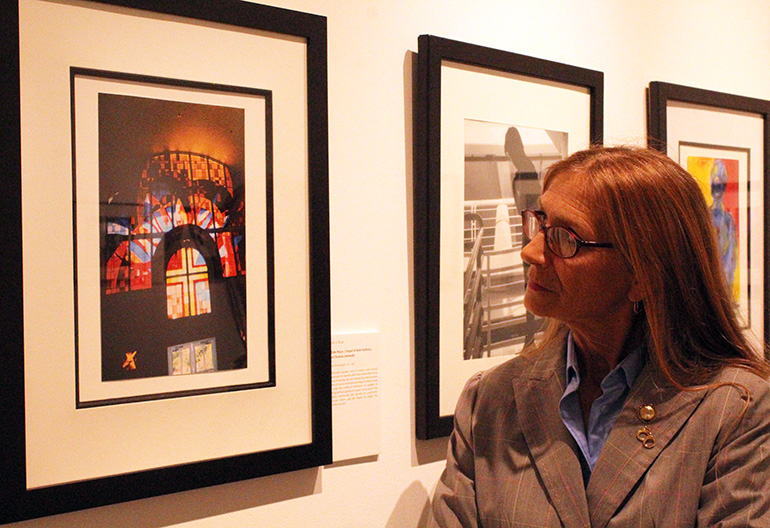
Photographer: CRISTINA CABRERA JARRO | FC
Susan Buzzi, a local photographer, victims' advocate and educator, takes a closer look at her photo "A Safe Place; Chapel of Saint Anthony, Saint Thomas University" on display at Archbishop John C. Favalora Archive and Museum at St. Thomas University. Her exhibit, "Responsibility and Vigilance," is a visual essay that examines domestic servitude, forced labor and human trafficking in the U.S.
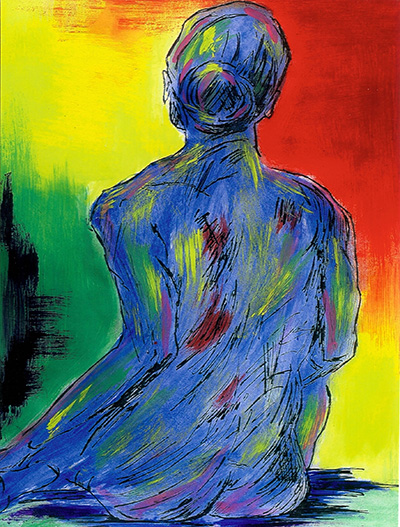
Photographer: COURTESY PHOTO
"Emotions" photographed by Susan Buzzi, a local photographer, victims' advocate and educator, for her exhibit "Responsibility and Vigilance."
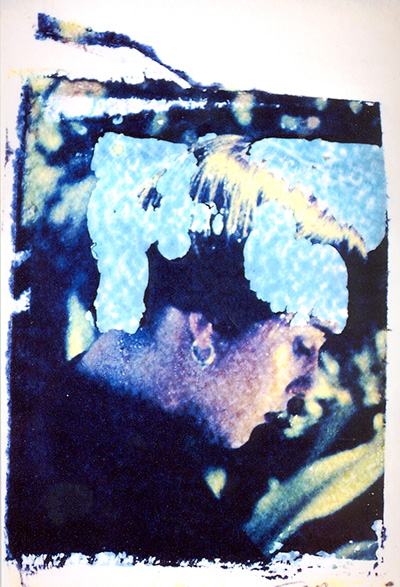
Photographer: COURTESY PHOTO
"Broken Dreams" photographed by Susan Buzzi, a local photographer, victims' advocate and educator, for her exhibit "Responsibility and Vigilance."
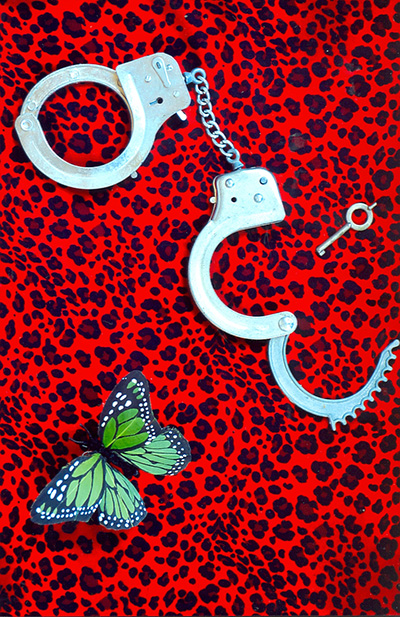
Photographer: COURTESY PHOTO
"Are Butterflies Really Free?" photographed by Susan Buzzi, a local photographer, victims' advocate and educator, for her exhibit "Responsibility and Vigilance."
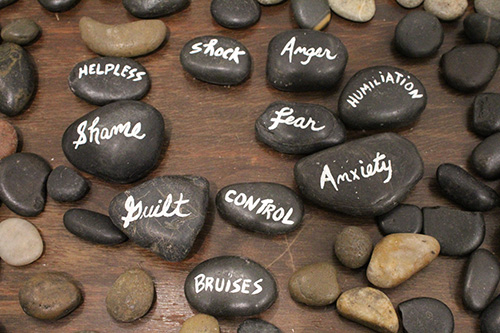
Photographer: CRISTINA CABRERA JARRO | FC
Leave no stone unturned: A tangible representation of the stones that victims of human trafficking use during therapy sessions with Susan Buzzi, a victim advocate and educator.
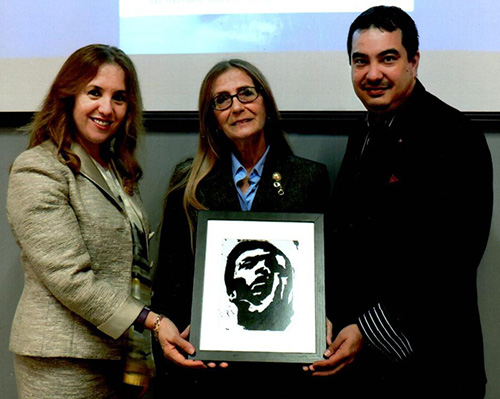
Photographer: COURTESY PHOTO
At the opening reception for her exhibit, "Responsibility and Vigilance, A Visual Essay," Susan Buzzi, center, is presented with a smaller copy of one of her works. Buzzi is accompanied by Lawrence Treadwell, STU Library director, and Dr. Roza Pati, director of the Human Trafficking Academy at STU's School of Law.
MIAMI | For Susan Buzzi, places of worship ought to be safe havens, where those suffering can find not only spiritual but physical salvation.
That’s why she included a photograph of St. Thomas University’s Chapel of St. Anthony in her exhibit, “Responsibility & Vigilance,” a visual essay that examines domestic servitude, forced labor and human trafficking in the United States.
The exhibit will be on display through May 31 at the Archbishop John C. Favalora Archive and Museum, located inside the university’s library.
Buzzi is a local photographer and retired police officer turned victims’ advocate and educator. Those depicted in her exhibit are human trafficking survivors she has counseled. Photographed on film rather than digitally, their images have been manipulated to help them remain anonymous.
Buzzi’s photos also have been used as awareness posters for the Human Trafficking Academy sponsored by STU’s School of Law.
She admits that she hesitated in approaching the subject matter for an exhibit, but thought exposing others to victims’ suffering would help to raise awareness about the issue.
“[Her] photography breathes of life, but does not necessarily depict the sunny side of the life of many amongst us,” said Roza Pati, law professor and director of the Human Trafficking Academy, in a forward written for Buzzi’s exhibit. “It is the life of the least in our midst, the women, men and children at the fringes, entangled in the web of the one of the worst forms of human exploitation: modern-day slavery.”
“It is sensitive material, but for a Catholic university and institution to present it to the community I think it’s a giant step for everybody to take notice and take a look,” said Buzzi, who credits STU President Msgr. Franklyn Casale, Library Director Lawrence Treadwell IV, and Museum/Library Acquisitions Coordinator Isabel Medina for encouraging her to curate the exhibit.
“Her work represents all of the pain and suffering of these victims and I think she captured that very well,” said Medina.
‘Pay attention’
“The community at large needs to pay attention,” said Buzzi, a Catholic and St. Thomas University alumna. “But the Church has a huge responsibility. For a victim and those who have suffered, imagine how wonderful it is to welcome them and make sure we keep them safe.”
Buzzi recalled instances of victims attending Mass while their trafficker waited outside. By keeping a watchful eye and intervening, church members can identify victims and offer them help. Often, she said, when authorities arrive the trafficker leaves. Those trafficked can then begin a journey of transition from victim to survivor.
A certified coach practitioner, Buzzi is sometimes the first person victims see. Her coaching and counseling style involves “healing arts” like art and music therapy to create a comforting ambience. Often, conversations take place over comfort foods, coffee or tea, or even soda if the victim is young enough. Her goal is to help them restore their sense of self-worth and confidence — over time.
“I remember every single case and person,” said Buzzi. “They’re all important to me and they get my utmost compassion.”
Her role now is different than the one she took on in law enforcement. While she agrees that authorities must work to hunt down traffickers, she said the work that goes on behind the scenes is just as necessary and often overlooked.
“I wore the blue and the uniform, and I have served that way,” she said. “It’s one thing to arrest someone, but when you have to deal with a victim and get them to transition and move forward, it’s a different story.”
At-risk youth
Buzzi is currently working with at-risk youths and young adults because she believes that’s where she can make the most difference. Trafficking victims often come from broken homes with no nuclear family or support. They are not the ones “doing the drugs” but are the ones selling them to provide for themselves — which makes them easy prey for traffickers promising them a better life.
Buzzi’s photo, “Point of Reference,” captures the sense of restlessness that a young victim involved in street violence, gangs and drugs feels. The image is of a wall with several layers of graffitied words, but the ones that stand out the most are black and neon orange letters that state, “This is the point of no return.” It becomes a haunting creed for many.
“The youth today is so vulnerable and that’s what really disturbs me the most and that’s where I try to make my impact,” said Buzzi. “We have to keep them engaged and contributing and doing something worthwhile and productive, and that’s where we are missing action.”
In “Survivor Art Works,” a transformative visualization and re-scripting writing exercise that Buzzi photographed in 2016, encouraging phrases like “inspire yourself,” “find your rhythm” and “be creative” appear. Such optimistic perspectives are followed by “lies, drugs, raids, beatings, more lies, trapped.”
At the end, there is a glimpse of hope for the victim transitioning to survivor: “Somehow I survived and still pray every day to forget.”
“There is a light at the end of the tunnel, but there’s a lot of people that have to step up and take part,” said Buzzi. “Keep your eyes and ears open and do something. It’s critical and it’s happening now more than ever.”
FIND OUT MORE
- The Archbishop John C. Favalora Archive & Museum is located on the campus of St. Thomas University, 16401 N.W. 37 Ave., Miami Gardens, 33054. It is open Monday through Sunday, 10 a.m.-6 p.m.
- St. Thomas University School of Law will host the Human Trafficking Academy Summer Session July 31-Aug. 4. For more information visit www.humantraffickingacademy.org.
- For more information on human trafficking, visit the National Human Trafficking Hotline at https://humantraffickinghotline.org/state/florida.
